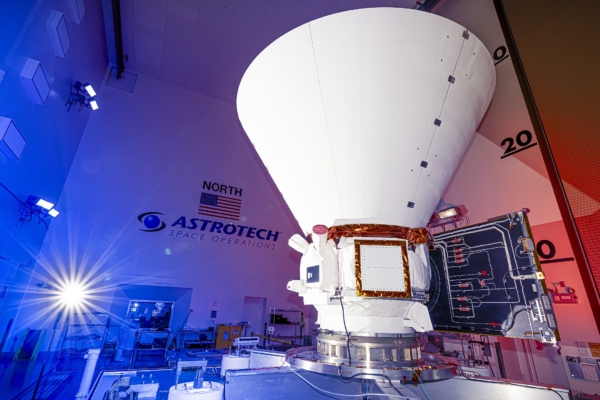On Tuesday, March 11, the latest space telescope SPHEREx from the National Aeronautics and Space Administration (NASA) was launched into space, embarking on an unprecedented cosmic panorama mapping mission. SPHEREx will scan hundreds of millions of galaxies to explore the origin of the universe and search for potential water resources within the Milky Way galaxy.
The launch took place at the Vandenberg Space Force Base in California, with the SpaceX Falcon 9 rocket carrying the SPHEREx telescope along with four microsatellites for solar research. SPHEREx, short for Spectro-Photometer for the History of the Universe, Epoch of Reionization and Ices Explorer, was deployed from the rocket’s upper stage, floating into space with the Earth’s blue backdrop.
During this $488 million mission, SPHEREx will collect data on over 450 million galaxies and 100 million stars within the Milky Way. It will create a three-dimensional map of the universe composed of 102 spectral colors to study the history and evolution of galaxies.
The conical-shaped SPHEREx telescope weighs 500 kilograms (1,110 pounds), equivalent in size to a grand piano. Utilizing infrared detection, it will scan the entire sky in six months and conduct four panoramic surveys within two years while orbiting along a polar orbit at a distance of 400 miles from Earth.
Unlike the Hubble and James Webb telescopes, SPHEREx will not focus on detailed observations of individual galaxies but will examine the collective radiance of the entire universe, particularly the light emitted by the earliest forming galaxies.
Jamie Bock, the chief scientist at Caltech, stated, “This cosmic radiance records all light sources throughout cosmic history, offering a new way of observation that can reveal previously unnoticed sources of light.”
SPHEREx’s infrared detectors can analyze 102 spectral colors invisible to the naked eye, producing the most comprehensive and colorful three-dimensional map of the universe to date.
Scientists hope to separate the light emitted by the earliest galaxies by analyzing this collective radiance to understand their origins, as pointed out by Bock.
SPHEREx will capture images of the universe from different directions, decoding the spectra of stars and galaxies to determine their composition and distance.
Within the Milky Way, SPHEREx will search for ices on interstellar dust grains, which could store key life elements such as water, carbon dioxide (CO₂), and carbon monoxide (CO).
In addition, NASA also launched the NASA PUNCH (Polarimeter to Unify the Corona and Heliosphere) satellite alongside SPHEREx. This mission aims to study the solar wind and corona and monitor the impact of space weather on human technology, such as interference with satellite communications and the Earth’s power grid.
Due to rocket and other technical issues, the launch was delayed by two weeks.
(Reference: Reuters and The Guardian)

